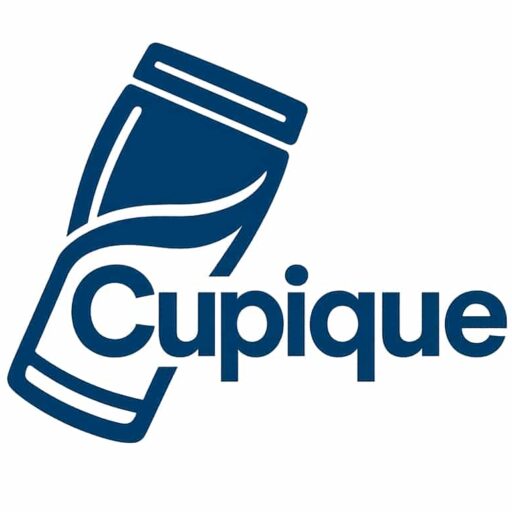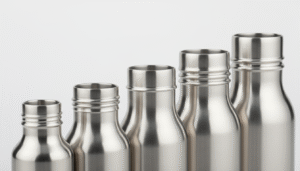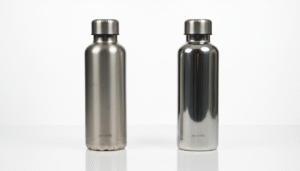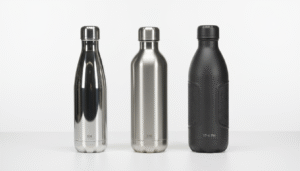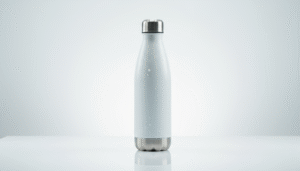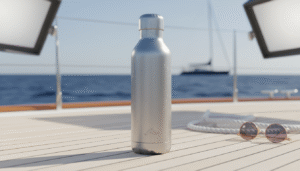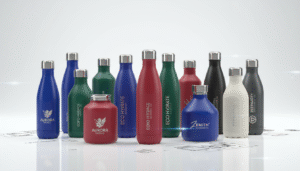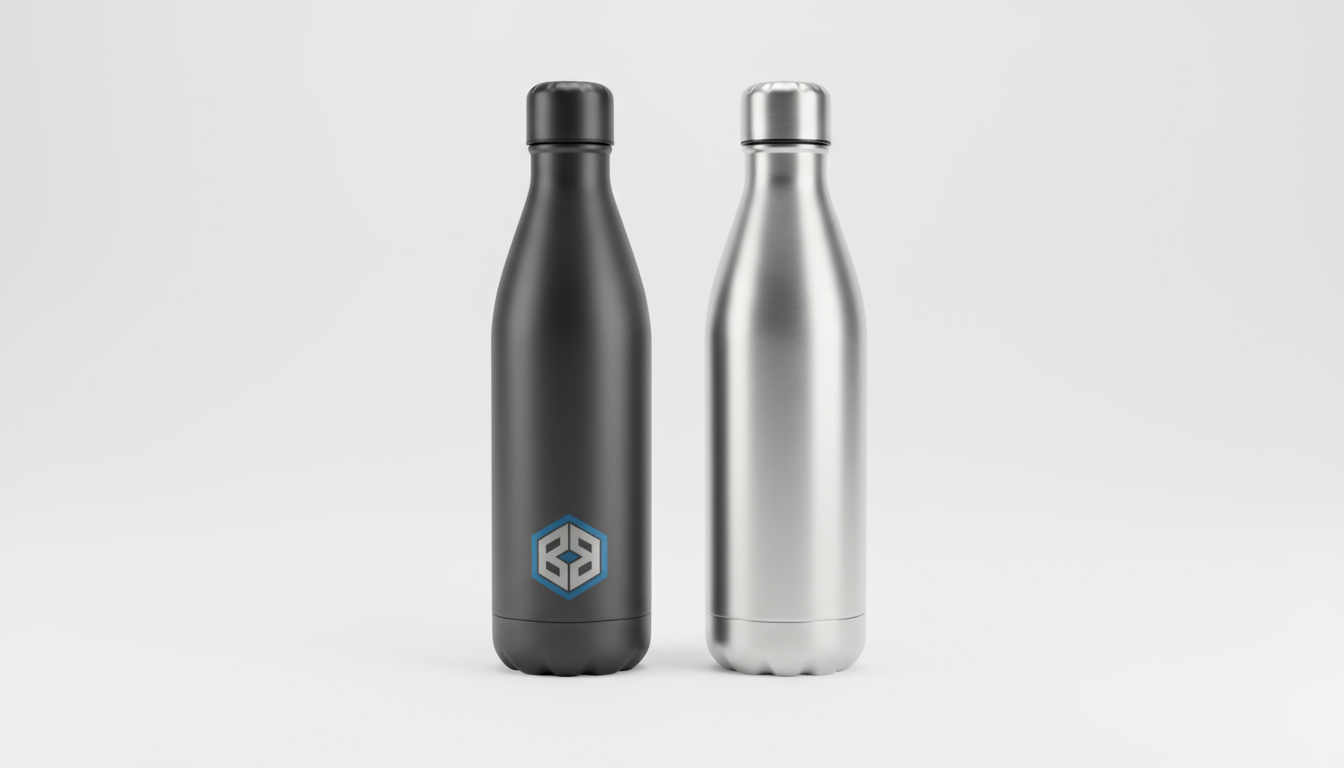
Ceramic-coated stainless steel delivers three game-changing advantages over uncoated options: laser engraving compatibility for permanent branding, precise color matching for brand consistency, and enhanced durability that protects your investment long-term.
Last month, I had a corporate client who learned this lesson the hard way. They ordered 500 uncoated tumblers thinking they'd save money. When they realized they couldn't get the premium laser engraving they wanted, they had to reorder everything. The coating isn't just decoration - it's your gateway to professional branding methods.
Ceramic-coated stainless steel provides laser engraving, precise color matching, and enhanced durability.True
The snippet explicitly lists these three advantages for ceramic-coated stainless steel.
Uncoated stainless steel offers better permanent branding options and color matching than ceramic-coated.False
The text states ceramic-coated steel provides laser engraving for permanent branding and precise color matching.
What Are the Main Types of Stainless Steel Finishes
You're staring at product catalogs wondering which finish delivers the best branding results. The options seem endless and confusing. Each finish serves different purposes.
The main stainless steel finishes for drinkware include brushed, mirror polished, matte, powder coating, and ceramic coating, with ceramic coating offering the most versatility for custom branding applications.
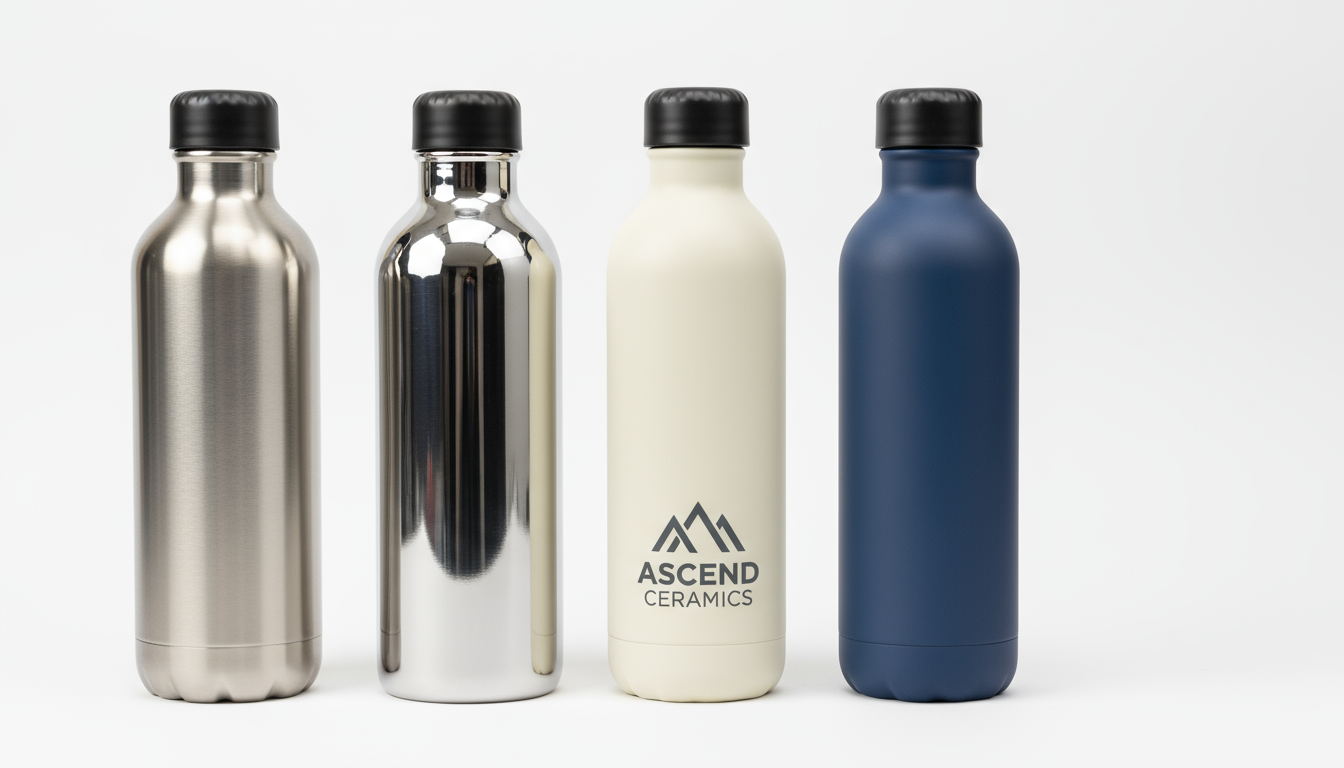
Understanding the finish options helps you make smarter sourcing decisions. The finish you choose affects everything from branding methods to long-term durability.
Standard Finish Categories
| Finish Type | Surface Texture | Branding Compatibility | Best Use Case |
|---|---|---|---|
| Brushed | Linear texture | Screen printing only | Budget projects |
| Mirror Polished | Reflective smooth | Limited customization | Premium appearance |
| Matte | Non-reflective smooth | Basic printing | Fingerprint resistance |
| Powder Coating | Textured color | Full customization | Corporate branding |
| Ceramic Coating | Smooth color | Laser + printing | Premium campaigns |
Branding Method Compatibility
The finish directly determines which customization methods you can use. Ceramic coating stands out because it supports both laser engraving and traditional printing methods. This flexibility means you can choose the best branding approach for each project.
Laser engraving works by removing the surface coating to reveal the underlying steel. This creates a permanent, wear-resistant logo that maintains its appearance for years. Uncoated surfaces can't achieve this effect because there's no coating layer to remove.
Screen printing and pad printing work on most surfaces, but they create raised layers that can wear off over time. When you combine printing with a ceramic base, you get better adhesion and longer-lasting results.
Ceramic coating offers the most versatility for custom branding applications.True
The text explicitly states ceramic coating's superior versatility for custom branding.
All main stainless steel drinkware finishes offer equal versatility for branding.False
The text identifies ceramic coating as most versatile for branding, implying others are less so.
How Does Stainless Steel Compare to Powder Coated Surfaces
You need to understand the trade-offs between different coating technologies. Both powder coating and ceramic coating offer advantages over bare steel. The choice affects your final product quality.
Powder coating provides excellent durability and color options at lower cost, while ceramic coating offers superior smoothness, heat resistance, and laser engraving compatibility for premium applications.
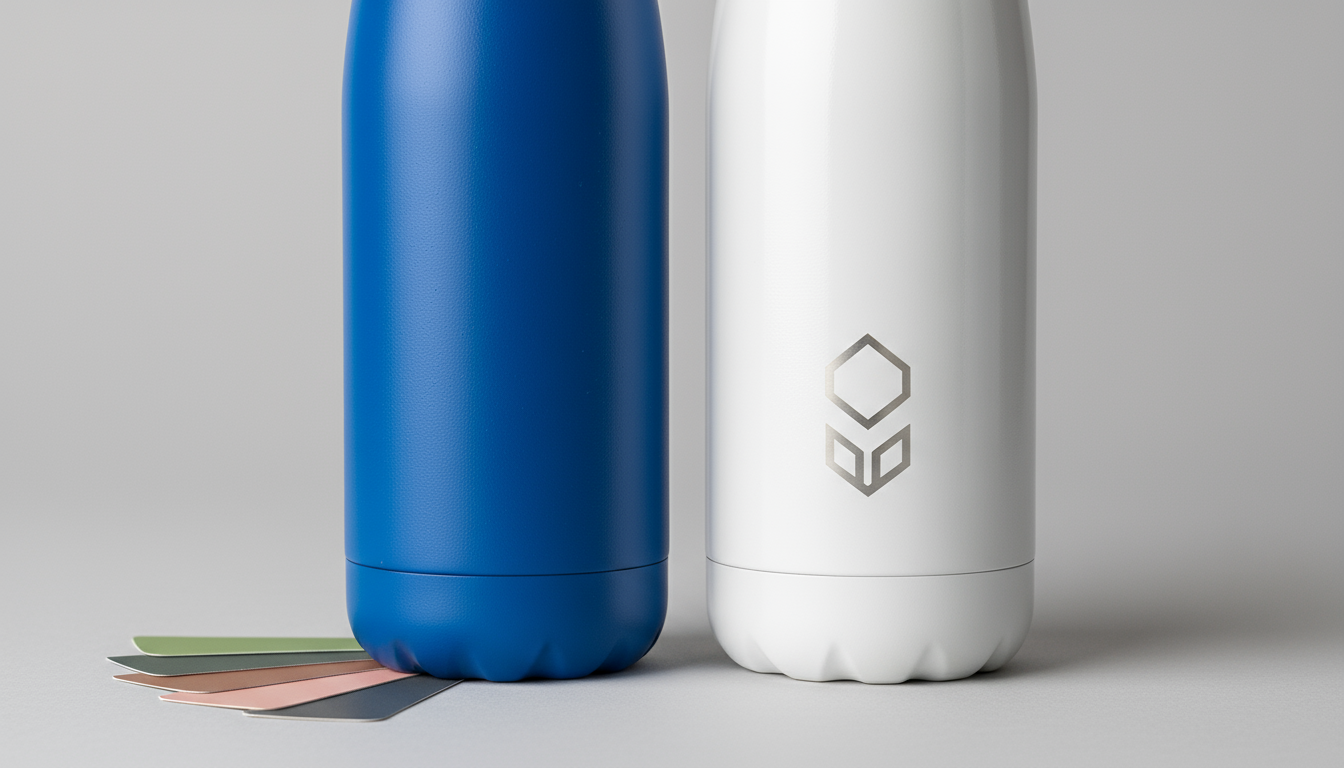
I've worked with clients who switched from powder coating to ceramic coating after experiencing the difference in feel and performance. The ceramic surface feels smoother and stays cooler to the touch.
Performance Comparison
| Feature | Powder Coating | Ceramic Coating | Uncoated Steel |
|---|---|---|---|
| Scratch Resistance | Excellent | Superior | Poor |
| Heat Resistance | Good | Excellent | Good |
| Color Options | Wide range | Custom matching | None |
| Surface Feel | Textured | Smooth | Cold metal |
| Cost Factor | Moderate | Higher | Lowest |
Durability Factors
Powder coating creates a thick, protective layer that resists impacts and scratches. The electrostatic application process ensures even coverage and strong adhesion. This makes it ideal for products that face rough handling.
Ceramic coating goes further by adding heat resistance and chemical resistance. The ceramic particles create a harder surface that maintains its appearance longer. This matters for drinkware because people handle these items daily.
Both coatings protect the underlying steel from corrosion and wear. However, ceramic coating provides better protection against temperature extremes and acidic beverages. This translates to longer product life and better brand protection.
Application Process Differences
The application process affects the final quality and cost. Powder coating uses electrostatic spray followed by heat curing. This creates a durable bond but limits surface smoothness.
Ceramic coating requires more precise application and higher curing temperatures. The result is a smoother, more refined surface that feels premium in hand. This process costs more but delivers superior results.
Powder coating offers durability, color options, and lower cost compared to ceramic coating.True
The text explicitly states powder coating provides these benefits at a lower cost.
Ceramic coating is generally less expensive than powder coating applications.False
The text indicates powder coating has a 'lower cost', suggesting ceramic coating is more expensive.
Which Finish is Best for Durability and Corrosion Resistance
Your brand reputation depends on products that maintain their appearance over time. Durability directly affects customer satisfaction and repeat orders. The right finish protects your investment.
Ceramic coating provides the best overall durability and corrosion resistance, offering superior protection against wear, chemicals, and temperature extremes compared to uncoated or powder-coated options.
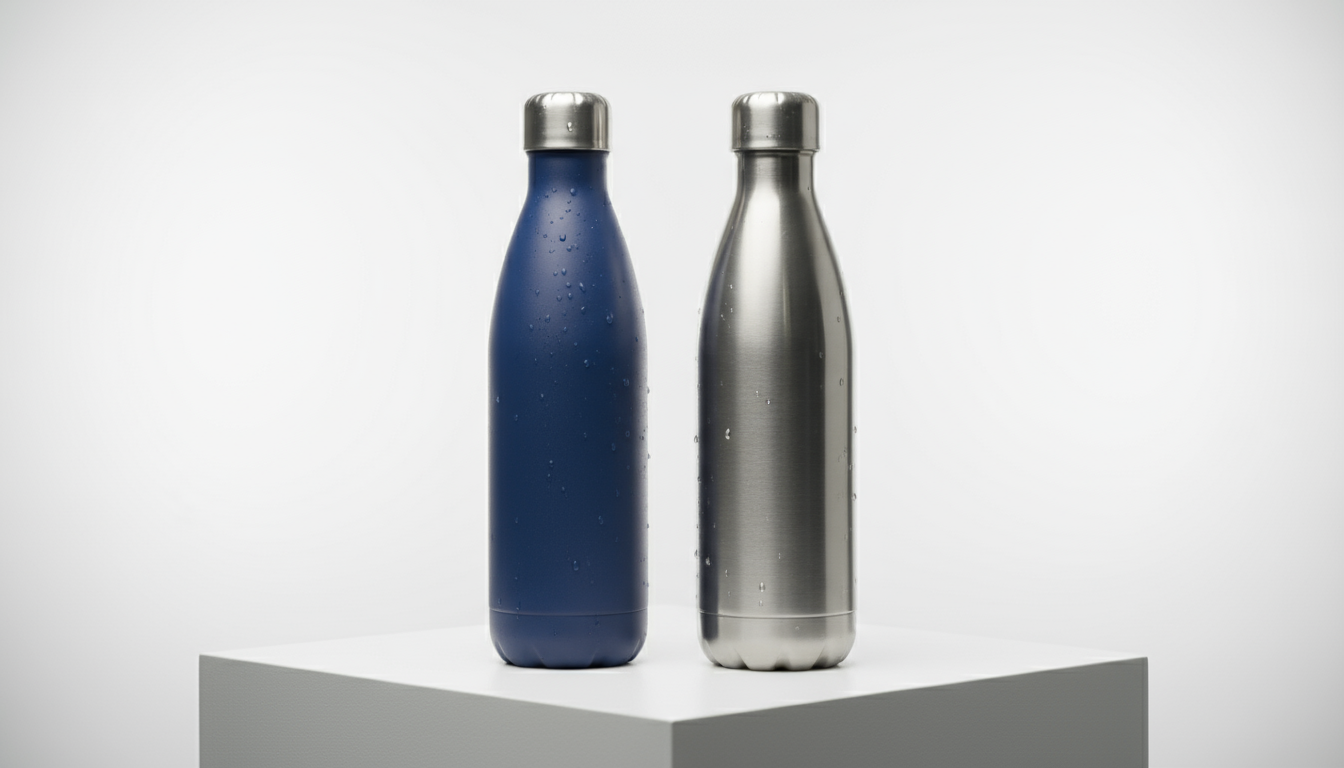
Last year, I tested samples from different coating suppliers by exposing them to daily use conditions. The ceramic-coated samples maintained their appearance and feel after months of testing.
Resistance Performance Matrix
| Resistance Type | Uncoated | Powder Coating | Ceramic Coating |
|---|---|---|---|
| Scratches | ★★☆☆☆ | ★★★★☆ | ★★★★★ |
| Corrosion | ★★★☆☆ | ★★★★☆ | ★★★★★ |
| Heat | ★★★☆☆ | ★★★☆☆ | ★★★★★ |
| Chemicals | ★★☆☆☆ | ★★★☆☆ | ★★★★★ |
| UV Exposure | ★★★☆☆ | ★★★☆☆ | ★★★★☆ |
Real-World Performance
Ceramic coating excels in environments where drinkware faces constant use. Office settings, outdoor activities, and promotional campaigns all subject products to wear and tear. The ceramic surface maintains its integrity better than alternatives.
Chemical resistance matters for drinkware because people use these products with various beverages. Coffee, tea, and acidic drinks can gradually damage unprotected surfaces. Ceramic coating creates a barrier that prevents staining and degradation.
Temperature resistance protects both the coating and the user. Hot beverages won't damage ceramic coatings, and the surface stays comfortable to touch. This performance advantage enhances user experience and product longevity.
Maintenance Requirements
Different finishes require different care levels. Uncoated steel shows water spots and fingerprints easily, requiring frequent cleaning to maintain appearance. This creates ongoing maintenance concerns for branded products.
Powder coating hides minor imperfections but can chip if damaged. Repairs require professional refinishing, making damage costly to fix. However, normal cleaning maintains the appearance well.
Ceramic coating requires minimal maintenance while providing maximum protection. The smooth surface resists staining and cleans easily. This low-maintenance characteristic appeals to busy professionals and active users.
Ceramic coating offers the best overall durability and corrosion resistance.True
The text explicitly states ceramic coating provides the best overall protection.
Powder coating provides equal or better durability than ceramic coating.False
The text states ceramic coating offers superior protection compared to powder-coated options.
What Is the Most Cost-Effective Stainless Steel Solution
You're balancing budget constraints with quality requirements. Cost-effectiveness means considering total value, not just initial price. The cheapest option often costs more in the long run.
Ceramic coating offers the best cost-effectiveness for custom branding projects by supporting premium customization methods, extending product life, and delivering superior user experience that justifies higher initial investment.
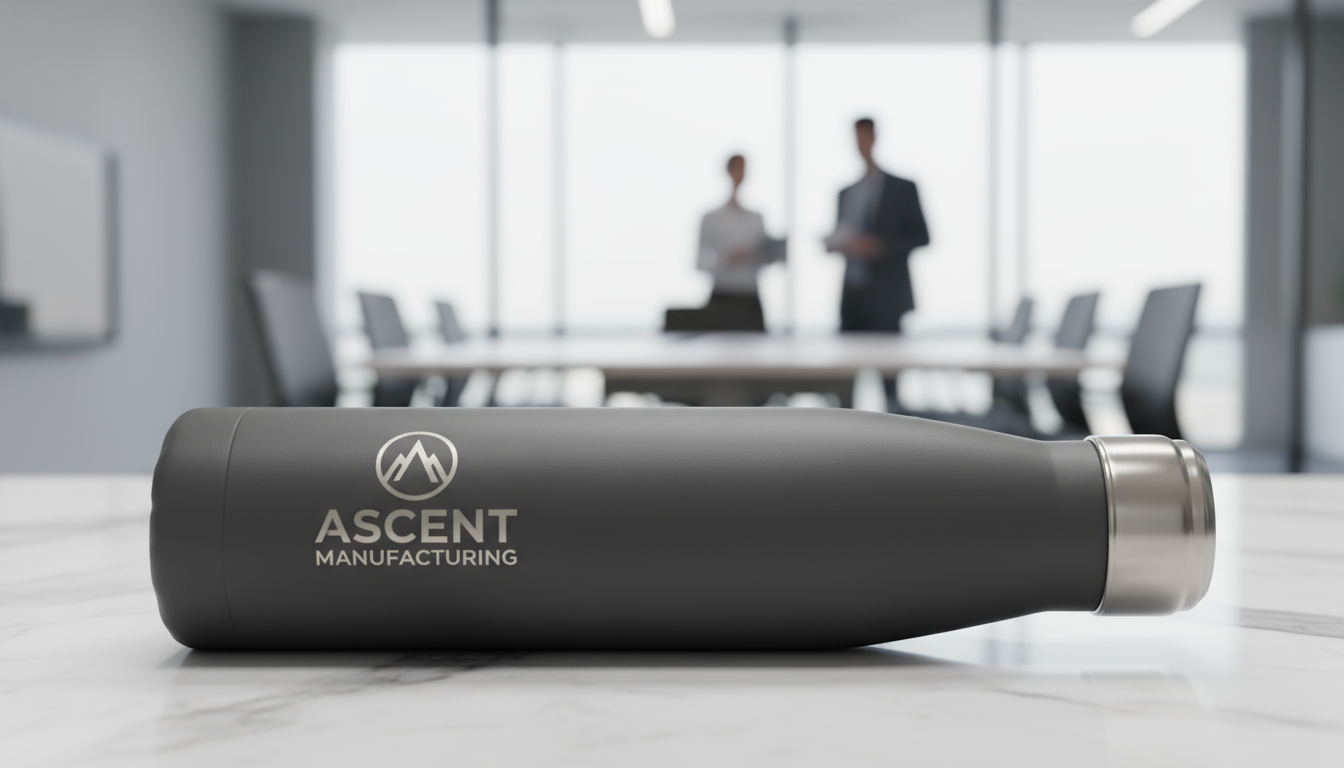
I help clients understand that cost-effectiveness includes the total ownership experience. A ceramic-coated tumbler that lasts five years with perfect logo appearance costs less per use than cheaper alternatives that need replacement.
Total Cost Analysis
| Cost Factor | Uncoated | Powder Coating | Ceramic Coating |
|---|---|---|---|
| Initial Unit Cost | $3.50 | $4.20 | $5.80 |
| Customization Options | Limited | Good | Excellent |
| Expected Lifespan | 2-3 years | 3-4 years | 5+ years |
| Maintenance Needs | High | Medium | Low |
| Brand Impact | Basic | Good | Premium |
Value Proposition Breakdown
The initial price difference between coating options becomes less significant when you factor in longevity and performance. A ceramic-coated tumbler that maintains its appearance for five years delivers better value than an uncoated option that looks worn after one year.
Customization capabilities directly affect the final product value. Laser engraving on ceramic coating creates a premium appearance that commands higher perceived value1. This enhanced branding capability can justify price premiums in corporate gift scenarios.
Brand protection represents another cost factor. Products that maintain their appearance protect your brand image over time. Worn or damaged promotional items can negatively impact brand perception, making durability a critical investment.
ROI Considerations
Return on investment depends on how the product serves your marketing goals. Corporate gifts and promotional items need to create positive impressions and lasting memories. Premium finishes support these objectives better than basic options.
Employee satisfaction and retention represent hidden value factors. High-quality branded items demonstrate company investment in employee experience. This indirect benefit can justify higher upfront costs through improved workplace culture.
Client relationship building benefits from premium promotional products. A well-crafted ceramic-coated tumbler with laser engraving creates a professional impression that supports business development efforts.
Ceramic coating is the most cost-effective for custom branding projects.True
The snippet explicitly states ceramic coating offers the best cost-effectiveness for these projects.
Ceramic coating is the cheapest initial option for custom branding projects.False
The text implies a 'higher initial investment' for ceramic coating, which is justified by its long-term value.
How Do You Choose the Right Finish for Your Application
Your specific use case determines the optimal finish choice. Different applications have different priorities and requirements. Understanding these factors guides smart sourcing decisions.
Choose finishes based on your primary goals: uncoated for basic applications, powder coating for durability-focused projects, and ceramic coating for premium branding campaigns requiring maximum customization flexibility.
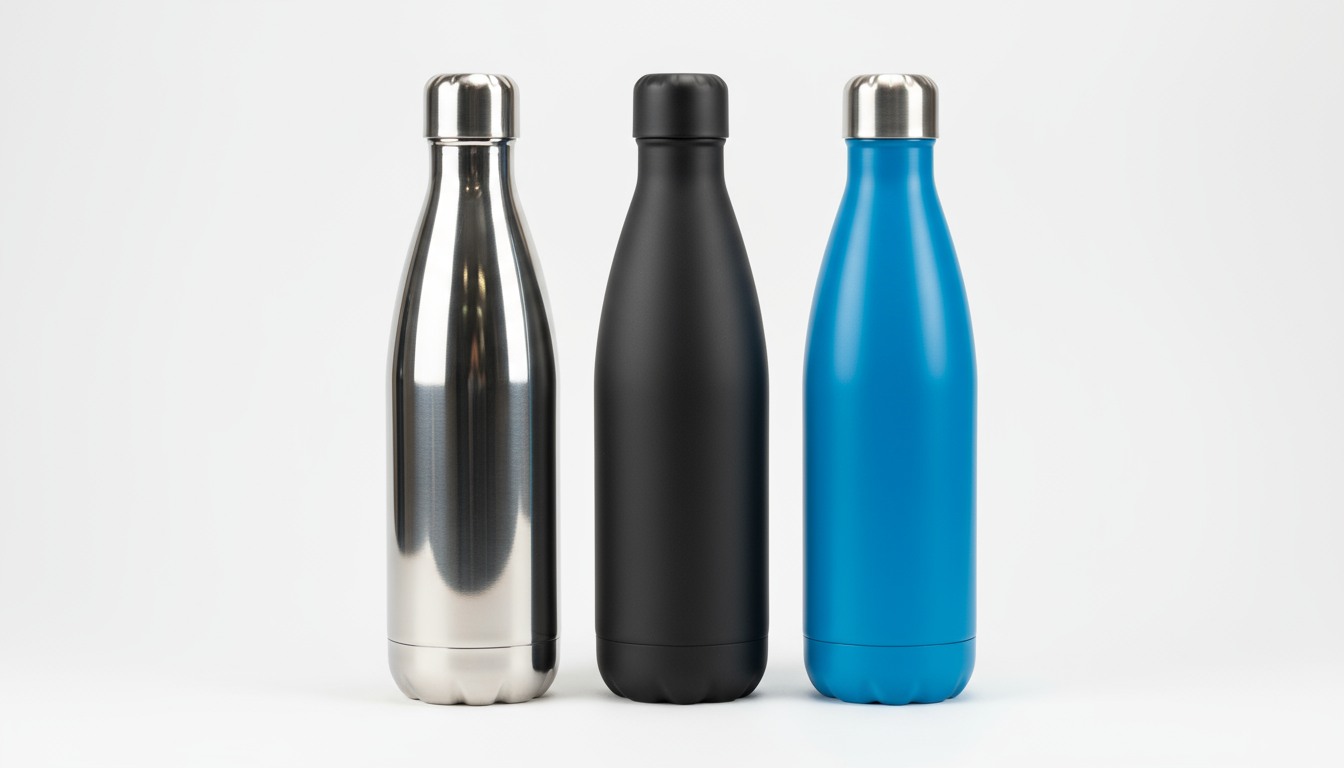
I work with clients to match finish choices to their specific objectives. A tech company launching a premium product line needs different solutions than a construction company ordering safety awards.
Application Decision Matrix
| Use Case | Primary Goal | Recommended Finish | Key Benefits |
|---|---|---|---|
| Corporate Gifts | Brand impression | Ceramic coating | Premium feel, laser engraving |
| Employee Recognition | Durability | Powder coating | Long-lasting, cost-effective |
| Trade Show Giveaways | Volume/cost | Uncoated | Basic branding, lowest price |
| Executive Gifts | Luxury | Ceramic coating | Custom colors, premium methods |
| Safety Awards | Recognition | Powder coating | Durable, professional appearance |
Decision Criteria
Budget constraints often drive initial discussions, but smart buyers consider total value. If your budget allows, ceramic coating provides the most flexibility and longest-term value. For tighter budgets, powder coating offers good durability at moderate cost.
Branding requirements significantly influence finish selection. Companies with specific color requirements need coating options that support custom color matching. Businesses wanting permanent logo application need finishes compatible with laser engraving.
Usage environment affects durability requirements. Office environments allow lighter finishes, while outdoor or industrial applications need maximum protection. Understanding the end-use environment helps optimize finish selection.
Timeline Considerations
Production timelines vary by finish type. Uncoated products ship fastest since they require minimal processing. Powder coating adds several days for application and curing. Ceramic coating requires the longest timeline due to precise application requirements.
Custom color matching extends timelines further. Standard colors ship faster than custom Pantone matches. Planning ahead allows time for proper color development and approval processes.
Sample approval processes help avoid delays. Requesting finish samples early in the project timeline prevents surprises and ensures final products meet expectations.
Finish selection aligns with primary application goals like durability or branding.True
The snippet directly advises choosing finishes based on primary goals for applications.
Powder coating is recommended for maximum customization and premium branding.False
The text states ceramic coating, not powder coating, offers maximum customization for branding.
What Are the Maintenance Requirements for Different Finishes
Long-term maintenance affects total ownership costs and user satisfaction. Different finishes require different care levels and cleaning methods. Understanding maintenance needs helps set proper expectations.
Ceramic coatings require minimal maintenance with simple cleaning, powder coatings need moderate care to prevent chipping, and uncoated surfaces demand frequent cleaning to maintain appearance and prevent corrosion.
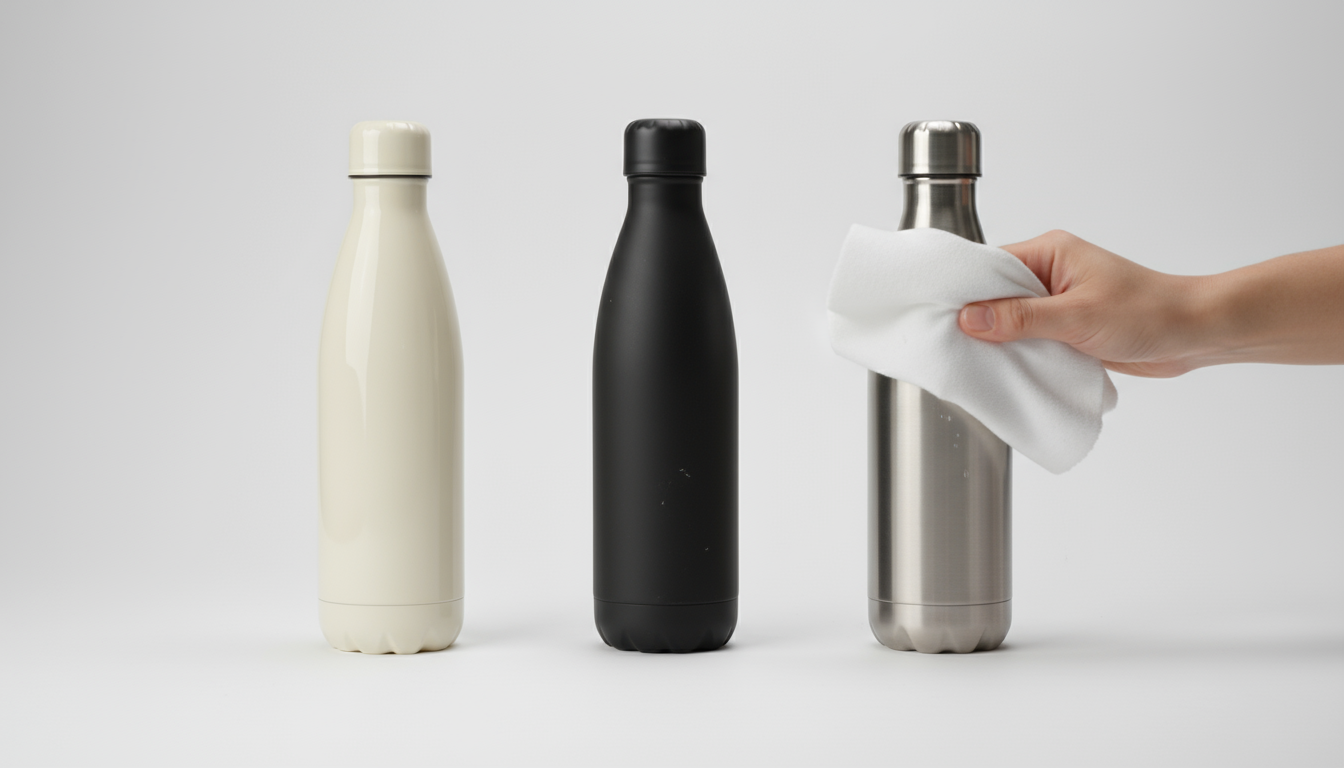
I provide maintenance guidelines to clients because proper care extends product life and protects brand investment. Simple care instructions can dramatically improve long-term appearance and performance.
Maintenance Comparison
| Maintenance Aspect | Uncoated | Powder Coating | Ceramic Coating |
|---|---|---|---|
| Daily Cleaning | Required | Optional | Minimal |
| Special Products | Yes | No | No |
| Damage Resistance | Poor | Good | Excellent |
| Stain Resistance | Poor | Good | Excellent |
| Professional Repair | Difficult | Possible | Rare need |
Care Instructions by Finish
Uncoated stainless steel requires the most attention. Water spots appear quickly and require immediate cleaning to prevent permanent staining2. Fingerprints show easily and need frequent wiping. Acidic substances can cause corrosion if left on the surface.
Powder coating maintenance focuses on preventing chips and scratches. Normal dishwashing works well for cleaning. Avoid abrasive cleaners that could damage the coating surface. Small chips can spread if not addressed, but major damage requires professional refinishing.
Ceramic coating offers the easiest maintenance experience. The smooth surface resists staining and cleans with simple soap and water. Most substances wipe off easily without special cleaners. The durable surface rarely requires repair or refinishing.
User Education
Providing care instructions with products protects your investment and ensures customer satisfaction. Simple guidelines help users maintain product appearance and extend useful life. This attention to detail reflects positively on your brand.
Clear maintenance expectations prevent customer disappointment. Users who understand proper care are more likely to achieve good long-term results. This leads to higher satisfaction and positive word-of-mouth promotion.
Training materials can include QR codes linking to online care guides. This modern approach provides detailed information without cluttering packaging. Updates and additional tips can be added to online resources over time.
Different finishes, such as ceramic and powder, have varying maintenance needs.True
The text explicitly states ceramic, powder, and uncoated surfaces require different levels of care.
All surface finishes require the same level of maintenance and cleaning methods.False
The text highlights that different finishes demand varying care levels and cleaning methods.
Conclusion
Ceramic coating transforms ordinary drinkware into premium branding tools through laser engraving compatibility, custom color matching, and superior durability that protects your brand investment for years.
